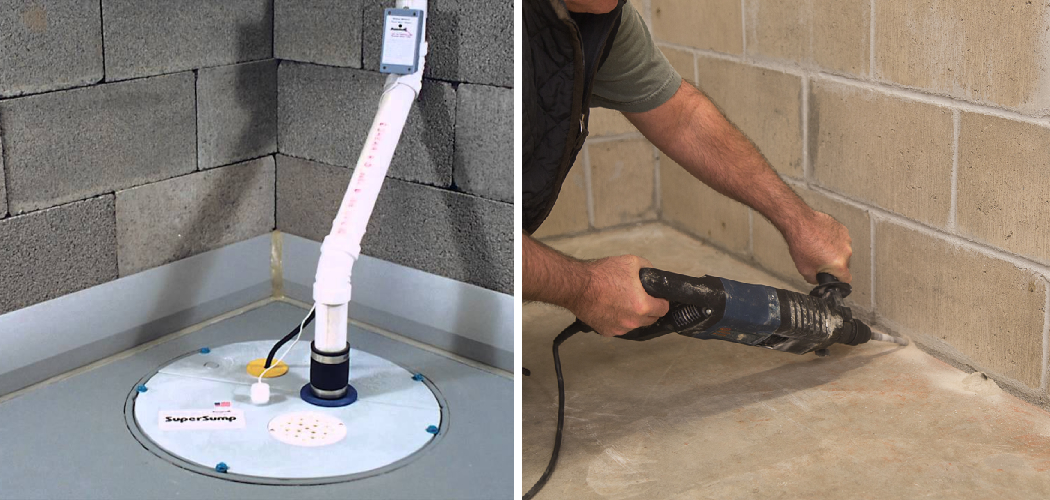Hydrostatic pressure can cause many issues in the basement, including structural damage and flooding. It is important to take steps to prevent or reduce hydrostatic pressure to maintain a safe and healthy living environment.
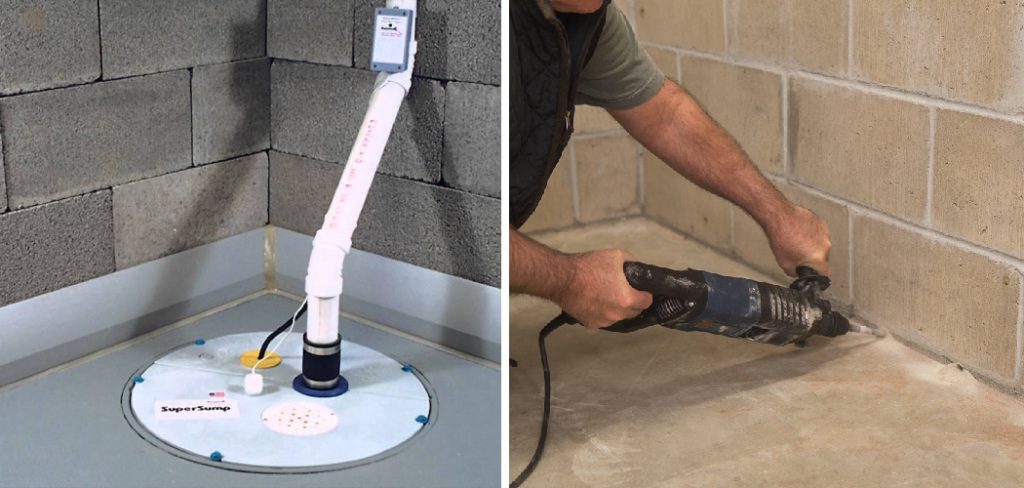
One of the main advantages of stopping hydrostatic pressure in the basement floor is that it can help protect your home from flooding. Hydrostatic pressure occurs when there is a difference in water levels on either side of a wall or foundation. This can cause water to seep into the basement and create flooding situations. In this blog post, You will learn in detail how to stop hydrostatic pressure in basement floor.
Step-by-Step Processes for How to Stop Hydrostatic Pressure in Basement Floor
Step 1: Inspect the Foundation for Water Leaks
One of the first steps to stop hydrostatic pressure on the basement floor is to inspect your foundation for any water leaks. Look for signs of seeping or pooling around the walls and floors, especially in cracks and joint seals. If you find any leak evidence, it’s important to patch them up as soon as possible before attempting other methods to combat hydrostatic pressure.
Step 2: Install a Sump Pump System
A sump pump system is one of the most effective ways to combat hydrostatic pressure on your basement floor. It works by collecting water from around the foundation and pumping it to an area away from your home. This helps relieve pressure on the basement walls and prevents further seepage.
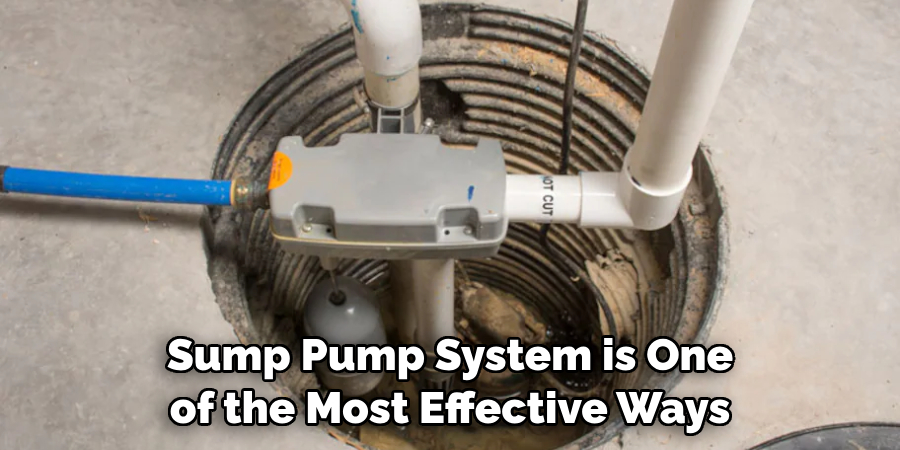
Step 3: Install an Exterior Waterproofing System
Exterior waterproofing systems create a barrier between the foundation and any water sources that may be seeping in. This helps to keep the basement dry, relieving pressure from hydrostatic forces. It’s important to ensure the system is properly installed and sealed to keep the water out.
Step 4: Install an Interior Waterproofing System
Interior waterproofing systems are used with external systems to help further protect your basement from hydrostatic pressure. These systems prevent moisture from seeping through walls, floors, and other areas. They also create a barrier between any water sources that may be near your foundation.
Step 5: Install a Sub-Floor Drainage System
Sub-floor drainage systems are designed to help collect and drain away any water that may have seeped into your basement floor. It works by creating a channel for the water to flow through, which helps reduce hydrostatic pressure on the walls and foundation.
Injection systems are designed to inject a waterproof sealant into the walls of your basement to stop water from seeping through. They work by filling any small cracks or gaps that may allow water to enter the basement, which helps relieve pressure from hydrostatic forces.
Step 6: Install a Vapor Retarder System
Vapor retarders are used to help keep moisture from entering the basement. This helps to keep the air inside dry, reducing hydrostatic pressure on the walls and foundation of your home.
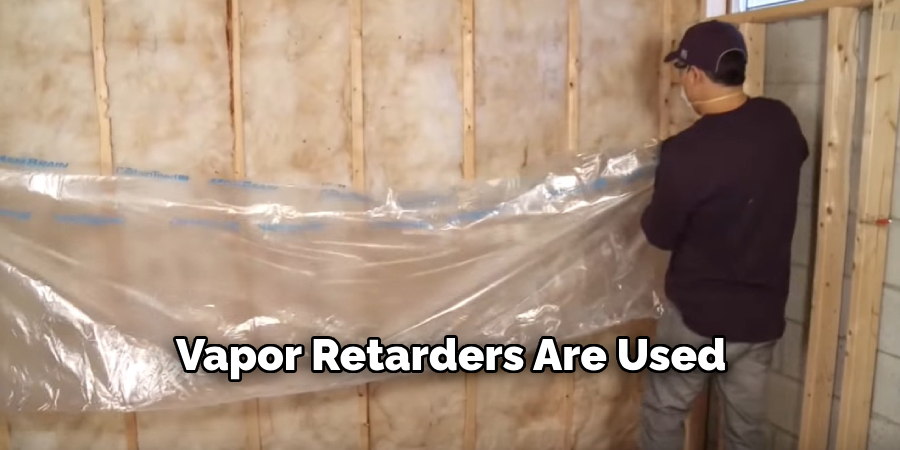
It’s important to inspect your basement regularly for any potential water issues that may be occurring. Check for signs of seepage or pooling, and if you find any evidence of these things, it’s best to take action as soon as possible to limit the damage caused by hydrostatic pressure.
Step 7: Seal All Cracks in Walls and Floors
To stop hydrostatic pressure on your basement floor, it’s important to ensure that all of the cracks in walls and floors are properly sealed. This will help keep water out, which in turn helps to reduce the amount of pressure on the foundation.
Step 8: Regularly Inspect your Exterior Waterproofing System
Finally, it’s important to ensure that your exterior waterproofing system is in good condition and functioning properly. Inspect the system regularly to ensure all seals are intact and free of any cracks or damage. This will help keep water out of the basement and reduce hydrostatic pressure on the walls and foundation.
Following these steps can help you reduce and stop hydrostatic pressure on your basement floor, thus protecting the foundation and walls of your home. If you’re unsure about any processes involved in stopping hydrostatic pressure, it’s best to contact a professional who can offer advice and assistance.
Safety Tips for How to Stop Hydrostatic Pressure in Basement Floor
- Use a sump pump system with a battery-operated backup to ensure water does not accumulate on your basement floor due to hydrostatic pressure.
- Install waterproofing membranes or sheeting on the walls and floors of your basement floor, as this will help stop hydrostatic pressure from penetrating through the concrete slab.
- Install a French drain system below the basement floor to divert water from the concrete.
- Apply sealants around any pipes, conduits, or joints that are located in your basement floor to prevent moisture seepage.
- Remove any dirt and debris from your basement floor, as these can act as reservoirs for hydrostatic pressure buildup. Check the exterior grade of your property and ensure that it slopes away from the foundation. This will prevent water from running toward your basement floor.
- Inspect all gutters, downspouts, and drains around your home to ensure they are properly functioning so as not to allow rainwater to pool near the foundation walls or basement floor.
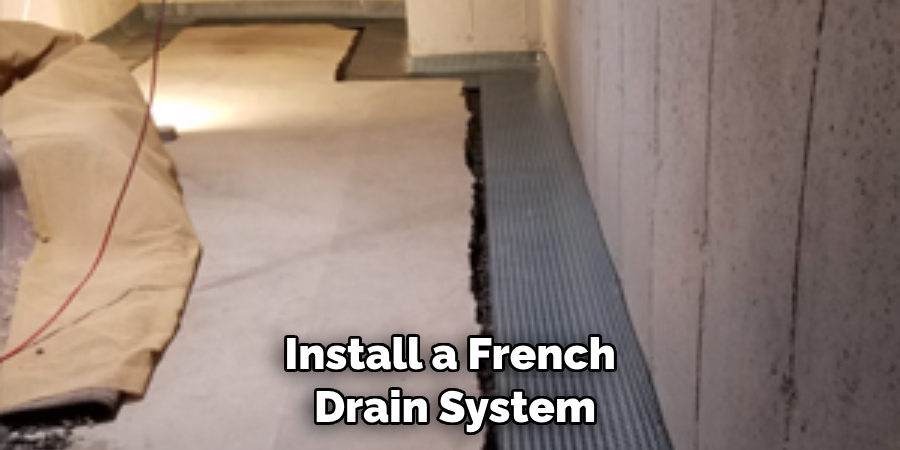
Following these safety tips can help you prevent hydrostatic pressure from damaging your basement floor and make your home both safer and more comfortable.
What Causes Hydrostatic Pressure on a Basement Floor?
Hydrostatic pressure is caused by an imbalance of water pressure pushing against the walls and floor of a basement. Too much water pressure can build up in the soil around your foundation or in the groundwater beneath your home.
This can cause structural damage to your basement, such as cracking or buckling the floor, which are signs of hydrostatic pressure. To prevent this problem, it’s important to learn how to stop hydrostatic pressure on your basement floor.
The first step is to assess the water levels around your home. Check for standing water near the foundation or any signs of seepage or flooding. If you find standing water, it’s important to address the source and ensure it does not continue to be a problem.
The next step is ensuring your gutters and downspouts are working properly. Gutters and downspouts should direct water away from the home’s foundation, helping to keep groundwater levels low. If they are clogged or blocked, they must be cleared out to ensure water can drain properly.
How Can You Prevent Hydrostatic Pressure in Your Basement Floor From Occurring?
Prevention is the best way to ensure that hydrostatic pressure does not affect your basement floor. The following steps can help you avoid dealing with this issue:
- Install a Foundation Drainage System: Installing a foundation drainage system is one of the most effective methods for preventing hydrostatic pressure from forming below your basement floor. This type of system involves laying a perforated pipe beneath your basement floor, with gravel around it. This helps redirect the water away from your basement and prevents it from seeping into the ground below, leading to hydrostatic pressure.
- Apply Waterproofing: If you already have an existing structure prone to hydrostatic pressure, waterproofing may be necessary. Applying a waterproofing membrane to the exterior of your basement can help keep water out, preventing hydrostatic pressure from forming.
- Install a Sump Pump: A sump pump is designed to collect and redirect any groundwater that enters your basement. It pumps the water up and away from your home, reducing the chances of hydrostatic pressure from occurring in the first place.
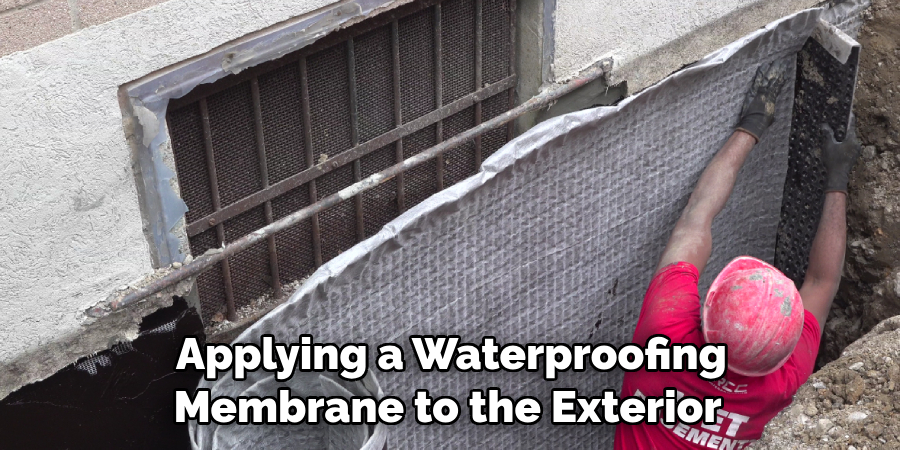
By following these steps, you can help protect your basement floor from the potential damage caused by hydrostatic pressure. Taking the time to address this issue now can save you a lot of money in the long run.
What Types of Waterproofing Systems Are Available to Help Prevent Hydrostatic Pressure on a Basement Floor?
Hydrostatic pressure in a basement floor is a serious problem that can cause significant structural damage – not only to the foundation but also to the home itself. Several waterproofing systems are available to help prevent this type of water damage.
One of the most common solutions is an internal system that involves applying sealants and coatings to the walls and floors of the basement. This type of system can help to prevent water from seeping in and causing damage, but it does require regular maintenance and is not a permanent solution.
Exterior waterproofing systems are also available that involve digging down around the foundation, installing new drainage systems, or applying sealants to the outside walls. These systems are more costly and time-consuming than interior systems, but they provide better protection from hydrostatic pressure in the long run.
When choosing a waterproofing system for your basement, it is important to consider both cost and effectiveness. It may be tempting to use an inexpensive solution that does not provide as much protection, but this could lead to costly damage later on.
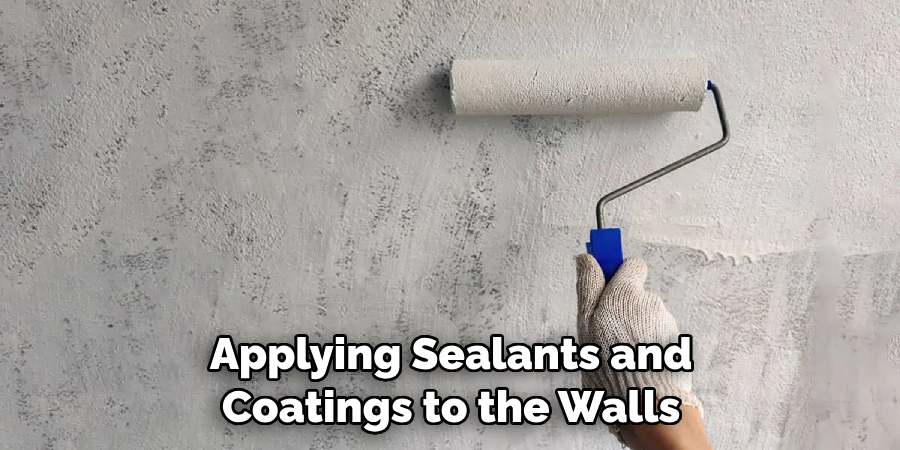
What Are the Potential Risks or Damages Can Occur Due to Hydrostatic Pressure on a Basement Floor?
Hydrostatic pressure can cause several potential risks and damages to a basement floor. If left unchecked, hydrostatic pressure can lead to foundation problems such as cracking or shifting the foundation walls. It can also cause moisture problems in your home’s drywall, insulation, and other materials by allowing water to seep.
This can lead to mold growth and mildew buildup, which can cause health problems. Furthermore, if the pressure is strong enough, it can damage structural wood supports and even cause flooding in your basement.
It is important to take measures to reduce or stop the pressure to prevent these risks and damages from occurring due to hydrostatic pressure. This can be done in several ways, including installing drainage systems and waterproofing basements. Additionally, homeowners should ensure that their gutters properly function and direct water away from the house. Taking these steps can help reduce hydrostatic pressure and protect your home from potential damage.
How Often Should You Check for and Monitor Hydrostatic Pressure in Your Basement Floor?
It is important to regularly check and monitor for hydrostatic pressure in basement floors. This is especially true if you live in an area where heavy rains, floods, or other water events are common. Checking the basement floor periodically can help you identify any abnormal buildup of hydrostatic pressure before it becomes a major problem.
The frequency with which you should check for hydrostatic pressure will depend on a few factors, such as the type of soil your basement is built in and how close it is to rivers or bodies of water.
Heavy rains or other water events may increase the risk of groundwater buildup, so it’s important to check more frequently. It’s also wise to have inspections done by professionals after these events. Other signs that hydrostatic pressure may be present include water seeping through cracks or other openings in the basement floor.
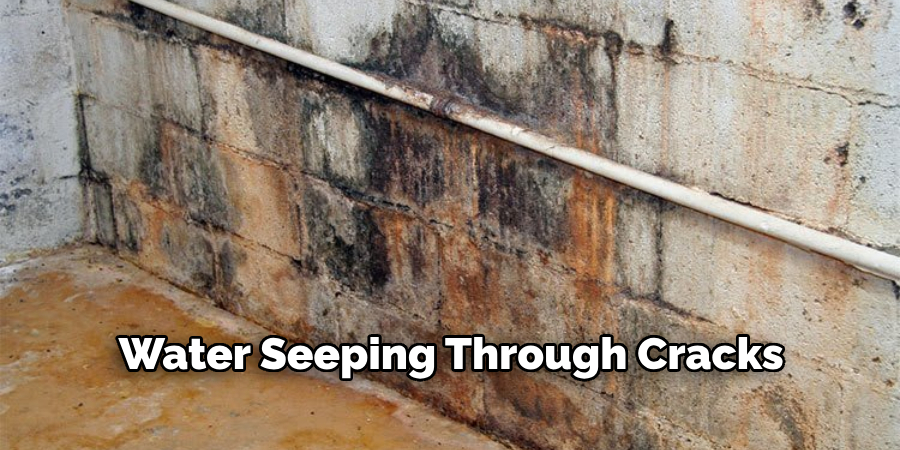
If there is a significant water buildup, you may also experience cracking or buckling of your basement flooring, which can cause further damage if not addressed promptly.
Conclusion
In conclusion, hydrostatic pressure can cause a great deal of damage to basement floors, and it is important to take steps to prevent it from occurring. By waterproofing your basement floor, using an internal drainage system, redirecting surface water away from the foundation, and keeping gutters clear of debris, you can help protect your home against hydrostatic pressure.
Taking these simple measures can save you from the costly damage if hydrostatic pressure is left unchecked. I hope this article has been beneficial in learning how to stop hydrostatic pressure in basement floor. Make Sure the precautionary measures are followed chronologically.
